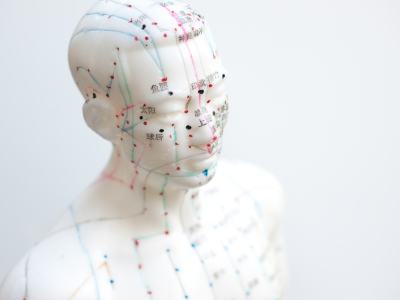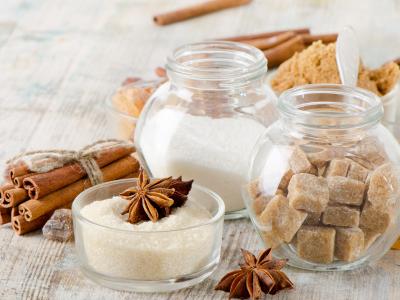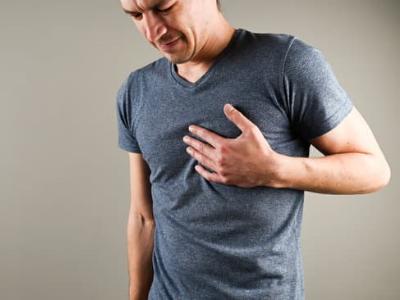Why are we so passionate about mental health at Raja Wellness?
The link between mental health and cardiovascular health is quite significant. Stress, especially chronic psychological stress, has a profound impact on the cardiovascular system. When the “stress response” is activated, the body secretes glucocorticoids, epinephrine, and other hormones, while inhibiting the secretion of growth hormone, insulin, and reproductive hormones. The sympathetic nervous system is also activated, leading to increased heart rate and blood pressure, among other physiological changes that divert blood to areas needed for immediate survival, such as the muscles and lungs, and away from non-essential areas like the gut and reproductive organs. This response is adaptive in the short term, but chronic activation due to chronic stress can lead to serious cardiovascular issues such as hypertension, atherosclerosis, and myocardial ischemia.
This connection between mental health and cardiovascular health highlights the intricate intertwining of psychological and physiological factors. The body's response to chronic stress can have detrimental effects on the cardiovascular system, emphasizing the importance of managing and addressing mental health to promote overall well-being, including cardiovascular health.

Acupuncture has many benefits for cardiovascular health:
1. Stress Reduction: Stress is a known risk factor for cardiovascular diseases. Acupuncture has been shown to modulate the body's stress response, potentially reducing the impact of stress on the heart and blood vessels.
2. Blood Pressure Regulation: Studies indicate that acupuncture may help in regulating blood pressure. By targeting specific acupuncture points, practitioners aim to optimize blood circulation and blood pressure levels, contributing to better cardiovascular function.
3. Inflammation Management: Chronic inflammation is closely linked to cardiovascular conditions. Acupuncture may exert anti-inflammatory effects, potentially reducing the systemic inflammation associated with heart disease.
4. Enhanced Circulation: The stimulation of acupuncture points is believed to enhance microcirculation, improving blood flow to vital organs including the heart. Enhanced circulation can promote heart health and overall cardiovascular function.
5. Complementary Therapy: Acupuncture is often used as a complementary therapy alongside conventional medical treatments for cardiovascular issues. It may help alleviate symptoms, improve overall well-being, and enhance the effects of standard cardiovascular care.
While acupuncture has clear benefits for cardiovascular health, we recommend individuals consult healthcare professionals before integrating acupuncture into their treatment regimen. Moreover, acupuncture alone may not be enough for people dealing with chronic stress.
Learning to manage our stress is a key part of maintaining heart health—and that’s where professional mental health care is so important as part of your overall wellness.
Herbal formulas also play an important role in heart health. Many formulas have been shown to reduce cholesterol and blood lipid levels, decrease inflammation, and increase peripheral circulation. For example, Clear Mind Formula is one of my favorite herbal formulas for heart health, especially here in Kentucky because of its natural antifungal and antimicrobial properties. This is a raw herbal concoction that we make in-house. We do recommend consulting with a trained herbalist before incorporating any herbal remedies into your care plan.
or
For more information, please don’t hesitate to call us at 270-506-3853 today!
References:
1. Wayne PM, Kaptchuk TJ. Challenges inherent to t'ai chi research: part II-defining the intervention and optimal study design. Journal of Alternative and Complementary Medicine. 2008;14(2):191-197.
2. Fu, C., Zhao, N., & Liu, Z. (2013). Chronic pain: acupuncture and related therapies. Springer Science & Business Media
3. Chen J, Ye C, Yang Z, Zhang C, Li P, Xu B, Wu A, Zhang X, Xue X. Erchen decoction to reduce oxidative stress in dyslipidemia phlegm-dampness retention syndrome mice: In vivo mechanism revealed by metabolomics (liquid chromatography-mass spectrometry). Phytomedicine. 2023 Jul;115:154808. doi: 10.1016/j.phymed.2023.154808.
After enjoying a delicious meal, we may be tempted to kick back and relax. However, emerging research suggests incorporating a brisk walk into your post-meal routine can offer numerous health benefits. From improved digestion to better blood sugar control, the advantages of walking after eating are backed by scientific evidence!
Enhanced Digestion:
One of the primary benefits of walking after eating is improved digestion. Physical activity helps stimulate the digestive system, encouraging the efficient breakdown of food. A study published in the "Journal of Gastrointestinal and Liver Diseases" found that post-meal walks accelerated the rate at which food moved through the stomach and intestines, reducing feelings of bloating and discomfort.1
Blood Sugar Regulation:
Walking after a meal may contribute to better blood sugar control, especially for individuals with or at risk of type 2 diabetes. A study in the "Diabetes Care" journal demonstrated that a short, 15-minute walk after each meal significantly lowered post-meal blood sugar levels in individuals with type 2 diabetes.2
Weight Management:
Incorporating walking into your post-meal routine may contribute to weight management. A study published in the "Journal of Physical Activity and Health" found that individuals who engaged in post-meal walks experienced reduced blood triglyceride levels, which are associated with improved metabolism and weight control.3
Mental Well-being:
Physical activity, including walking, has been linked to improved mood and reduced stress levels. Taking a short stroll after a meal can help combat feelings of lethargy and promote a sense of well-being. A review in the "British Journal of Sports Medicine" highlights the positive impact of physical activity on mental health.4

Sometimes, walking may not be an option, and that’s ok! The subtle strength of any low-impact exercise offers wonderful benefits and is accessible to individuals of all ages and fitness levels. Low-impact exercises such as using a rebounder or simply bouncing in place for 2 minutes can offer similar physical and mental health benefits!
The evidence supporting the benefits of walking after eating is compelling. From aiding digestion and regulating blood sugar to contributing to weight management and mental well-being, taking a post-meal stroll or even bouncing in place is a simple yet effective way to enhance overall health!
Incorporating this habit into your daily routine may lead to long-term positive outcomes, making it a small step with significant health rewards.
Sources
One of my favorite holiday dishes is my mom’s sweet potato pie, a side dish from deep in the South that is resplendent in butter and sugar. Yummy—but not healthy despite the main ingredient being a very nourishing sweet potato. So I set out to create a version of the dish that was Alpha Gal friendly and with greatly reduced sugar. The final dish is every bit as wonderful—but now a guilt-free treat. This process can be applied to any of your favorite recipes, remember it’s ok to fail in the experiments —that’s how we learn!
Back to the recipe redo…. there were two main ingredients I was concerned about for health reasons: sugar and butter.
It is important to undertake this process in steps and understand a little about the “chemistry” of the dish:
The butter/fat adds to the flavor and makes the nutrients in the sweet potato more readily absorbed by the body—but 2 sticks for the size of the recipe is excessive.

Sugar isn’t just a sweetener but sometimes acts as a catalyst. For example when whipping cream—the addition of sugar helps the cream form better though less is needed than most people realize, so we cannot completely remove some ingredients without consequences to the final product!
I experimented with reducing the butter first, could I cut the butter in half and still have a good version? The answer was yes—1 stick of butter tasted identical to 2 sticks in the final product. So then I halved that again—½ stick butter—and it was a little dry (not so yummy). So I added some unsweetened apple sauce and that worked! Then I replaced the ½ stick of butter with an equal amount of coconut oil—success—no mammal and a nearly identical flavor. Next step, the sugar…
The original recipe used 2 C of sugar in total! I cut that in half…and it wasn’t noticeably less sweet, especially with the apple sauce. Next, I made it with even less (½ C) and it was a little flat compared to the original recipe.
So what to do?
I increased the cinnamon then added cardamom and clove to the mix and increased the applesauce and amount of sweet potato. The extra spices did the trick—the nature and flavor of the dish were preserved and the sugar was reduced by ¾! Now we can enjoy this dish without the sugar rush. I have also experimented with a monk fruit-based sweetener replacing the ½ C sugar making a dish that is safe in moderation even for those with diabetes! Don’t tell my mom but sprinkling some chopped nuts on top of this is a wonderful addition- pine nuts, macadamia nuts and walnuts all work beautifully with this recipe! And, nuts are good for your body and brain!
Here is my final "Healthy" version of Southern Sweet Potato Pie!
I hope this helps inspire you to take some of those family favorites and tinker with them to make them better for you. Pancakes, cookies, and pie crusts often lend themselves well to a gluten-free makeover and it’s worth the work to figure out which options work best. For example, I love shortbread and the gluten-free flour mix that rocks for pancakes but was a disaster for shortbread— but almond flour was even better than the original!
Cooking is a special kind of alchemy, one that transforms humble ingredients into nourishing and flavorful dishes. Food is the first medicine, but it doesn’t need to taste bad! If you need inspiration, check out our Facebook Group, Raja Wellness Ways to Health, and search #realfoodfast or browse the recipes on our website.
Yours in Wellness,
Jenny-Marie
As we come into the darker part of winter and the days approach their shortest lengths, many people struggle with their mood. Sometimes called Seasonal Affective Disorder it can range from mild to severe. In addition, the holidays can be a difficult time for many people—especially when dealing with loss, isolation, or inability to connect with family and friends. There are options for getting through this time with greater ease and well-being.
From a Chinese Medicine perspective, this time of year calls for a natural slowing and drawing inward: a time for nurturing, quiet contemplation and taking a break from the tendency to strive for more.
From this perspective, the desire to slow down and reflect is not pathological but a natural reflection of the seasonal changes. This time is important to consolidate and prepare for the coming growth of spring. It’s ok to not always be striving and pushing. However, it should not be a depressing struggle. If you struggle with this time of year here are some recommendations to navigate the shorter days with better ease:

In honor of Father’s Day, I wanted to take this opportunity to highlight how acupuncture and TCM helps men’s health; and to remind men that they need to take care of themselves too. Statistically men are less likely than women to seek health care and married men tend to see the doctor more often than single men, but still less often than women (even accounting for pregnancy needs). One of the biggest complaints I hear from male patients is they are too busy or they don’t want to walk out with another pill to take.
I started this with a search of “top reasons men go to the doctor” and could only find research and articles on why men should go to the doctor—it seems we haven’t really looked at why they do go when they do in much detail. I did find this gem from The Cleveland Clinic and their support of the MENtion It Campaign—an initiative to encourage men to seek care. Despite the fact that the majority of men want better health to care for their families, less than half of those who listed that as a priorit, seek regular care.
The top reasons why? They don’t want to know they have to make a lifestyle change, or fear of finding out what they have. We get it—but there are better options than neglecting your health. And if you don’t want to take a pill when things are going wrong, yes, you will need to make a change. But aren’t you and your family worth it? So if you have an issue—MENtion It! We are here to listen.
One advantage acupuncture has over other options is we treat the whole body during a session—you may be coming in for back pain or knee pain, but we will also be addressing sleep, digestion, immune function, endocrine balance and more. If you think about it, it is truly a great value! Similarly, our approach using herbal formulas is to select a formula that addresses as many issues at once as possible—so you can take one thing and have multiple issues get better. And unlike just treating a symptom, when we are able to get to the root of the problem, and as a result, you feel better and stay that way even without being on herbs all the time.

Menopause gets a lot of notice, but did you know men go through a similar process called Andropause? First written about in 1946, a landmark paper in JAMA entitled, “The Male Climacteric” characterized it with nervousness, reduced potency, decreased libido, irritability, fatigue, depression, memory problems, sleep disturbances, and hot flushes. Hypogonadism is broad scientific term and it refers to a “clinical syndrome caused by androgen deficiency, which may adversely affect multiple organ functions and quality of life.”1 Decreasing testosterone levels are linked to a number of disease processes and shorter life-span. The traditional approach is supplemental testosterone, but acupuncture and traditional East Asian herbal medicine have also been shown to regulate testosterone levels in the body, improve mood, sleep, endocrine function and cardiovascular health.
Speaking of hearth heath—statistically 1 in 4 men will die of heart disease and it’s complications. Men tend to develop heart disease earlier in life than women and are less likely to make the lifestyle changes necessary to reverse heart disease. Coronary artery disease is one of the most common forms of heart disease among men and responds incredibly well to lifestyle and diet changes. Tons of this research can be found here.
JAMA: Intensive Lifestyle Changes for Reversal of Coronary Heart Disease
If you made it this far into the article, congratulations! As a thank you for being loyal reader, use the code “mentionit” for 10% off you next order from our website. Discount code valid 6/15/23 - 7/15/23. Not valid with other offers, not valid for gift cards. Other restrictions may apply.
Did you know half of men who have heart attacks have no symptoms before it happens? Or perhaps, didn’t know they were having symptoms. One of the earliest signs of heart disease is erectile dysfunction. Another early sign of heart disease is new onset anxiety2. Mental health issues and heart disease are often tangled together and in many cases of anxiety being caused by low grade (not yet detectable) heart disease, the typical anxiety medications don’t work well. Acupuncture is very effective for both mental health and cardiovascular health—and as we mentioned above, can address both issues in the same sessions!

Last, but not least is prostate health. Benign Prostate Hyperplasia responds very well to acupuncture and herbal therapies3. Acupuncture can increase urinary output, reduce the size of the prostate, and beyond hyperplasia is effective for treating Prostatitis as well.
Harvard Study on Acupuncture Relieving Prostatitis Symptoms
These results tend to be long-lasting after the initial course of treatment. Prostatitis alone is responsible for over 2 million doctors visits a year, and is often recurring and has no clear cause. So even if we can’t convince you to see your doctor once a year (yet), schedule an appointment with one of our acupuncturists, check out our online resources, and remember—Dads are an important part of the family and it’s important they get the care they need so they can take care of others!
1 Singh P. Andropause: Current concepts. Indian J Endocrinol Metab. 2013 Dec;17(Suppl 3):S621-9. doi: 10.4103/2230-8210.123552. PMID: 24910824; PMCID: PMC4046605.
2 Celano CM, Daunis DJ, Lokko HN, Campbell KA, Huffman JC. Anxiety Disorders and Cardiovascular Disease. Curr Psychiatry Rep. 2016 Nov;18(11):101. doi: 10.1007/s11920-016-0739-5. PMID: 27671918; PMCID: PMC5149447.
3 Zhang W, Ma L, Bauer BA, Liu Z, Lu Y. Acupuncture for benign prostatic hyperplasia: A systematic review and meta-analysis. PLoS One. 2017 Apr 4;12(4):e0174586. doi: 10.1371/journal.pone.0174586. PMID: 28376120; PMCID: PMC5380320.
When it comes to the heart and the question of “Can Acupuncture really help with that?” the answer is a resounding yes! From angina to issues of rhythm and blood flow, there is ample research to show acupuncture helps with no documented adverse effects during study periods—even with severe heart diseases.
Acupuncture as an adjunctive therapy improves treatment outcomes and pain relief for patients with Coronary Artery Disease (CAD) related angina. We’ve seen this repeatedly in our clinic as well.
Atrial Fibrillation (Afib): 1x weekly acupuncture for 12 weeks showed improved structural remodeling of the heart in patients with afib. This was fascinating to me, as I knew regular acupuncture of 2-4x per month extended the time between problems my afib patients had by 50-70% over what they experienced before acupuncture; but to learn it helped positively remodel the structure of the heart?!?! That’s huge!
Acupuncture has consistently been shown to increase blood flow and exercise tolerance in patients with chronic heart failure. This reduces stress, helps maintain a healthy weight and immune function, and improves patient quality of life without negative side effects!!
There are some well-understood mechanisms at play here such as the ability of acupuncture to regulate the balance of the sympathetic nervous system and vagus nerve, to help increase peripheral circulation, and to improve patient well-being; but to see that acupuncture is positively changing cell-signaling and structure of the heart itself shows there is much more than just a placebo effect going on. So yes, acupuncture helps. We even have some incredible herbs available to support and enhance treatments.
The bad news: Acupuncture isn’t a miracle cure (nothing alone is!). I probably sound like a broken record to some of my patients at this point, but for all the wonderful things we can do with acupuncture, herbs, and FSM to help with heart health—the choices you make at home each day about what foods you eat (or don’t eat) and what you do for stress management are critical to successfully managing and possibly even reversing heart disease. If you are taking blood pressure meds, cholesterol meds, or diabetes medicines, you aren’t healthy—you are masking an underlying disease process that will negatively impact your quality of life (if not the quantity of it as well). All the acupuncture in the world can’t overcome bad food choices. So to encourage heart health, we are including an eating guide to help you as well as resources for more help if you need it! And while you fix your diet, let acupuncture help you along the way!
1 https://www.ncbi.nlm.nih.gov/pmc/articles/PMC8778603/
2 Kristen AV, Schuhmacher B, Strych K, Lossnitzer D, Friederich HC, Hilbel T, Haass M, Katus HA, Schneider A, Streitberger KM, Backs J. Acupuncture improves exercise tolerance of patients with heart failure: a placebo-controlled pilot study. Heart. 2010 Sep;96(17):1396-400. doi: 10.1136/hrt.2009.187930. Epub 2010 Jun 15. PMID: 20554511.
3 Middlekauff HR, Hui K, Yu JL, Hamilton MA, Fonarow GC, Moriguchi J, Maclellan WR, Hage A. Acupuncture inhibits sympathetic activation during mental stress in advanced heart failure patients. J Card Fail. 2002 Dec;8(6):399-406. doi: 10.1054/jcaf.2002.129656. PMID: 12528093
*Disclosure: I only recommend products I would use myself and all opinions expressed here are our own. This post may contain affiliate links that at no additional cost to you, I may earn a small commission. Read the full privacy policy here.
Congratulations!
You've survived another holiday season, one of the coldest storms on record for early winter, and probably even spent a little time thinking about the year to come. Millions of people have finished up their year making resolutions to do better in some way—sleep more, eat better, lose weight, save more money, or whatever they feel they are missing. Millions more have celebrated a year come and gone with only a resolution to make no resolutions. No matter which camp you fall into, resolutions often fail. Not because they aren’t worthy, or because their crafter is weak-willed, but because resolutions by themselves are not enough to create changes in habits. And little changes can add up.
We've recently started carrying a new weight loss supplement—I’m very excited about it, especially for those who get stuck in “leptin resistance” and can’t lose weight. But by itself, it's not a magic pill. It takes sustainable change to reduce weight and improve your health. As an experiment, I just added the supplement and made no other changes. I have 20 lbs I’d like to lose. It’s not horrible, but I made a choice last year to focus on other things and not worry about the weight. This year I decided it comes off. So I’ve been taking the supplement for 6 weeks with no other changes and I’ve lost about 3 lbs and 7 inches in total body measurements (waist, neck, chest, hips, arms, thighs, and calves) with the bulk coming off the waist and hips so far. I notice I’m less hungry and I’m craving more veggies with it.
I’ve also been reviewing the research of what’s out there as far as nutrition, inflammation, and weight loss. The data on fasting periodically and its ability to help your body renew itself is remarkable. I’ve looked at the research cited by the China Study, Dr. Gundry (who’s all about eliminating lectins from the diet), and Dr. Anderson (who’s all about how to regulate mental health with diet and exercise whenever possible). The trends are clear and consistent with what I already knew with some new twists. Even moderate calorie restriction for a few days a month can mimic the benefits of traditional fasting. Sugar is bad, fake sugar (with a few exceptions) is worse. Fruits are ok in moderation and when in season. Grains and starches are often just sugars in disguise! And a little quality meat can be beneficial but too much is not good either—many keto diets are far too meat heavy to be healthy in the long run.
I learned some other new things—not eating for at least 4 hours before sleep and waiting for a solid 18 hours to eat again a day or two a week can dramatically improve the housekeeping processes of the brain, leading to reduced inflammation. While I don’t know that I subscribe to the idea that lectins are disastrous for everyone, I have to admit there are enough case studies and examples that suggest if you haven't tried eating lectin-free for 30 days and you struggle with chronic inflammation of any kind, you should give it a shot. In many cases, if you give the gut adequate time to heal, you can add some of those lectin-containing foods back in moderation.

I firmly believe most people in the US are dangerously deficient in vegetables, both in quantity and variety. Many things you “don’t like” are reflections of which bacteria dominate your gut microbiome and as you change your food, you change your flora and your tastes will reflect those changes.
So, for the next 90 days, I’m going to follow the Longevity Paradox meal plan from Dr. Gundry along with my weight loss supplement. I do plan to have occasional sourdough bread in small amounts because I've tried being completely gluten-free in the past and my body feels worse with none. But there’s a huge difference between an occasional small slice of sourdough from organic non-GMO grains and the typical loaf of bread or biscuit available in stores. But other than that small variation, I plan to follow his plan closely. And I'll see what the scale says then.
If you would like to try that weight loss supplement—it’s available for order here
*Note there is both a straight retail option and a membership option for a discount—either way, it comes with a 60-day money-back guarantee!
So back to those resolutions...and why so many fail.
Goals that are not measured typically are not achieved—take for example:
“I want to exercise more in 2023”. This alone is a resolution doomed to failure!
What kind of exercise? When? How often? For how long? Let’s say you decide you want to complete a 10k run by the end of the year. That’s slightly better but still highly likely to fail unless you are already consistently running close to that distance regularly. But let’s assume like many well-intentioned resolutions, you aren't sure you can run around the block...how do you successfully turn that resolution into a completed goal?
1. Pick an actual goal date—Find a race or set a date to run that distance on your own and work backward and make sure it’s far enough out for you to have adequate time to reach your goal.
2. Break it down—If, for example, you want to run a 10k by November, you probably should be able to run a 5k by June...there are a bunch of “Couch to 5k” running guides out there—find one to help you plan.
3. Break it down again—If you want to run 5k by June, you probably should be close to 2.5k by March. That’s a reasonable time length to build a plan around.
4. Make your 90-day plan—Work back from 5k to 2.5k to 0k—and write it out. Then pick one thing you can do today to get you started. Perhaps it’s seeking advice on where to run, reaching out to a local running club, or getting outside to do a test run of how far you can go without straining right now.
5. This is most important—every day when you complete that “mini goal”—celebrate! Give yourself a high five, bask in your awesomeness; give your brain a little “dopamine rush” and help it see the benefit of completing these goals.
That's just one example—maybe your exercise goal is to maintain your current good habits. Then you might say “I will continue to lift weights for 45 min 3 days per week and get over 10K steps a day at least 5 days a week”. Or maybe your goal is to get up out of a chair without struggling— break down how to make that goal work for you!

Sometimes we know all these tricks and we still somehow “get in our own way” and as a result, don’t achieve our goals. When that happens, coaching can be immensely valuable in addressing the hidden things that are holding us back from the life we want. Depending on your needs, I may recommend working with one of the coaches I know; or in some cases working with myself and my equine partners in an equine gestalt session over at Rowdy Cowgirl Coaching.
New Year's resolutions are a great way to set goals and work towards self-improvement. While it can be challenging to stick to resolutions, it is important to remember that progress, not perfection, is the key to success. Don't be too hard on yourself if you struggle to meet your goals, and remember to celebrate your victories along the way. With determination and the right strategies, you can make lasting positive changes in your life in the new year and beyond!
Acupuncture can be used to restore hormonal balance, regulate energy levels, smooth emotions and help manage sleep, emotions and menstrual problems. There are several powerful acupuncture points on the ear and the body that can be used to regulate the production of thyroid hormones. Studies have shown acupuncture can reduce thyroid nodules, restore normal thyroid function and reduce the need for thyroid hormone supplementation1.
When it comes to lifestyle changes, a diet rich in protein, calcium, magnesium, and iodine helps support thyroid function; while certain foods known as goitrogens may interfere with thyroid hormone production and should be limited. These include cruciferous vegetables (such as cauliflower, cabbage, and brussels sprouts), peanuts, and soy. Stress-reducing exercises such as yoga or tai chi are also beneficial.
In a normal, healthy state—the thyroid gland secretes just the right amount of thyroid hormone to regulate almost all the metabolic processes in your body. Too much or too little of these vital body chemicals can drastically influence your health. With over 20 million Americans living with some form of thyroid disease, much attention has been given to the many ways that acupuncture and Oriental medicine can treat thyroid problems.
When your thyroid is not functioning properly, it can produce too much hormone (Hyperthyroidism) or too little (Hypothyroidism).
Hyperthyroidism:
Hypothyroidism:
If you have a thyroid problem, call us for a consultation. A custom-tailored treatment plan will be created to suit your individual needs—so that you can feel better quickly and safely!
Follow Raja Wellness on Facebook and Instagram!
Follow Raja Goods on Instagram!
Source:
1 Chen Q, Zhou J, Zhang X, Wang L, Yang B, Xia J, Zhong M, Tang X. Acupuncture for thyroid nodule treatment: A protocol of systematic review and meta-analysis of randomized clinical trials. Medicine (Baltimore). 2020 Oct 2;99(40):e22276. doi: 10.1097/MD.0000000000022276. PMID: 33019402; PMCID: PMC7535653.
Sure, maybe a little spontaneity is in order to spice things up a bit—but building your spice cabinet can add a little spunk to your immunity, kick up your body’s anti-inflammatory response, and perk up your metabolism, along with adding a lovely punch of flavor to any dish! If you're looking to add a little zest to your life—start with your plate. Dried herbs and spices are chock-full of healthy compounds that bring excitement to your palate and can be utilized for better health, too. Basically, if you have a well-stocked spice cabinet, you have a well-stocked arsenal for better health.
Spices may consist of the bark, root, stem, seed, or flower of a plant, which are typically dried, and carry strong flavors and aromas. They can be added to a dish throughout the cooking process to further develop their flavors into whatever you are cooking. Many spices are high in vitamin and mineral content, are great sources of antioxidants and phytonutrients, boast antimicrobial properties, help to reduce inflammation, regulate blood sugar, and even improve digestion. Using spices is a great way to supercharge your diet, add more complex flavors, and reduce the need for extra salt and sugar. Here are just a few of our favorite spices to have on hand along with some of their health benefits:
Chili Peppers: Fresh, dried, or powdered, chilies are guaranteed to add a little kick to any meal. With anti-inflammatory properties and immune-boosting properties as well, chili peppers offer the component capsaicin, which has been shown to reduce and inhibit “Chemical P,” the compound responsible for transmitting pain messages to the brain. This has been found helpful for joint pain, migraines, and neuropathy. The vibrant red color of chile peppers means it is rich in beta-carotene (precursor to Vitamin A), which also helps lower the risk of age-related diseases such as stroke, macular degeneration, and coronary artery disease. Along with Vitamin C, your immune system gains a boost to fight off illness.
*A little secret - I keep a small container of red chili flakes in my purse so I can add some spicy pizazz to whatever I eat, even if I’m on the go.*
Turmeric: A true “super spice” with a rich, earthy, and bitter profile, the golden-hued turmeric is commonly added to many meals such as curries, stews, and even smoothies! Its most active compound, curcumin, is known for its anti-inflammatory and antioxidant properties. Curcumin can also increase the antioxidant capacity of the body, stimulating the activity of other antioxidants while fighting off free radicals. This can be highly beneficial for both brain and heart health. Curcumin only makes up about 3% of turmeric by weight and isn’t highly bioavailable, but you can increase its bioavailability by around 2000% by consuming it along with black pepper.
Black Pepper: More than likely, you have some black pepper on hand. Piperine, the component in black pepper that makes curcumin more bioavailable, enhances the bioavailability of other important nutrients as well. It can also aid in digestion by boosting the activity of digestive enzymes.
Ginger: As most of us know, ginger is a go-to for an upset stomach and nausea. Spicy, peppery, yet sweet, ginger goes great with soups, marinades, dressings, desserts, and teas. Ginger has a calming effect on the lining of the digestive system. It also boasts anti-microbial properties which can help ward off infections. Loaded with nutrients and bioactive compounds, ginger offers powerful benefits to the body and brain by reducing oxidative stress and inflammation.
Cardamom: Often found in pumpkin spice mixes, cardamom is a sweet, pungent spice that can fight inflammation, ease an upset stomach, and is high in magnesium and zinc.

Some other healthy spices you may consider using are cumin, mustard powder, cinnamon, cocoa, nutmeg, curry, and last but not least, garlic (just to name a few!). Think of what flavor combinations would elevate your dish—experimentation is key!
Spices don’t just contribute to the flavor of food, they contribute nutrients, minerals, and antioxidants as well. With properties that fight inflammation, free radical damage, and oxidative stress—you and your taste buds will be doing a proverbial happy dance!
Follow Raja Wellness on Facebook and Instagram!
Follow Raja Goods on Instagram!